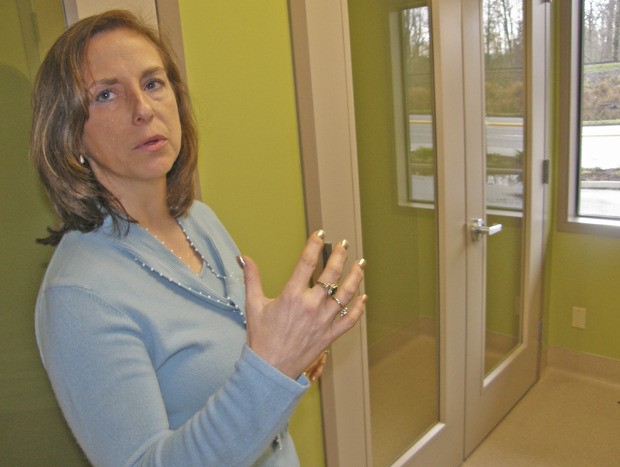There are the usual loose ends to tie up at the new Auburn Valley Humane Society animal shelter on A Street Southeast, a week before its Jan. 1 opening.
Desks to be moved, banks of cages waiting to be fit together.
But as yet, the barkers, meowers and kibble munchers for which the place has been built are elsewhere.
In the midst of it everything is shelter director Kelley Durham, orchestrating an army of volunteers pouring in to put everything together and ticking off the points on an extensive check list of must-dos.
It will be, Durham said, a fully-equipped, up-to-date shelter, thanks in overwhelming part to the generosity of the community, which has taken the shelter into its arms and supported it in 10,000 ways great and small.
“The community has just been unbelievable,” Durham said. “I would say 99 percent of what you see as you walk around has been donated by the community.”
First up, the check-in and check-out area, dominated by a reception desk topped by fine granite, the donation of a construction company. Retailers and private parties have stocked a small retail area with animal toys and knick-knacks. Space has been set aside for animal adoptions counseling.
Durham would like to have the custom glass — another gift from a private donor — by Jan. 1 to enclose a room to the right of the main entrance, where visitors can watch cats in a free-roving, colony situation and visit felines they may wish to adopt.
“When you bring them in, it gives them a chance to relax,” Durham said. “The more you lower the cats’ stress level, the fewer incidents of disease there will be. That means you don’t have to hold them as long in a medical area somewhere, which means they get adopted faster and the more lives you save.”
Down the hall is a break room where staff and volunteers can relax from what can be a stressful job.
One of the special features of the Auburn shelter is the cat isolation room. Staff enter through a sally port, first gowning up to protect themselves from picking up any diseases that can be passed from animal to human. This room offers various small rooms that separate cats afflicted by various ailments from one another. When the doors are opened, air is sucked out of the building instead of blowing back into the room. Caretakers can observe the cats without entering the isolation rooms.
“Disease control is extremely important, so what you do is compartmentalize,” Durham explained.
The shelter has set aside another room where staff and volunteers can meet pet owners who for various reasons can no longer keep their animals. Visitors enter by a side door to keep their dogs and cats from the general population.
Other features:
• An intake and treatment room
• A meeting room available to various organizations
• A laundry room and food prep room
• A room where people can come to look for their lost pets
• An animal grooming area. A woman who ran a grooming shop but has terminal cancer has donated her grooming equipment. This will not be grooming for poodle cuts, Durham said, but for animals infested with fleas or with severely matted hair or overgrown nails that have to be clipped.


